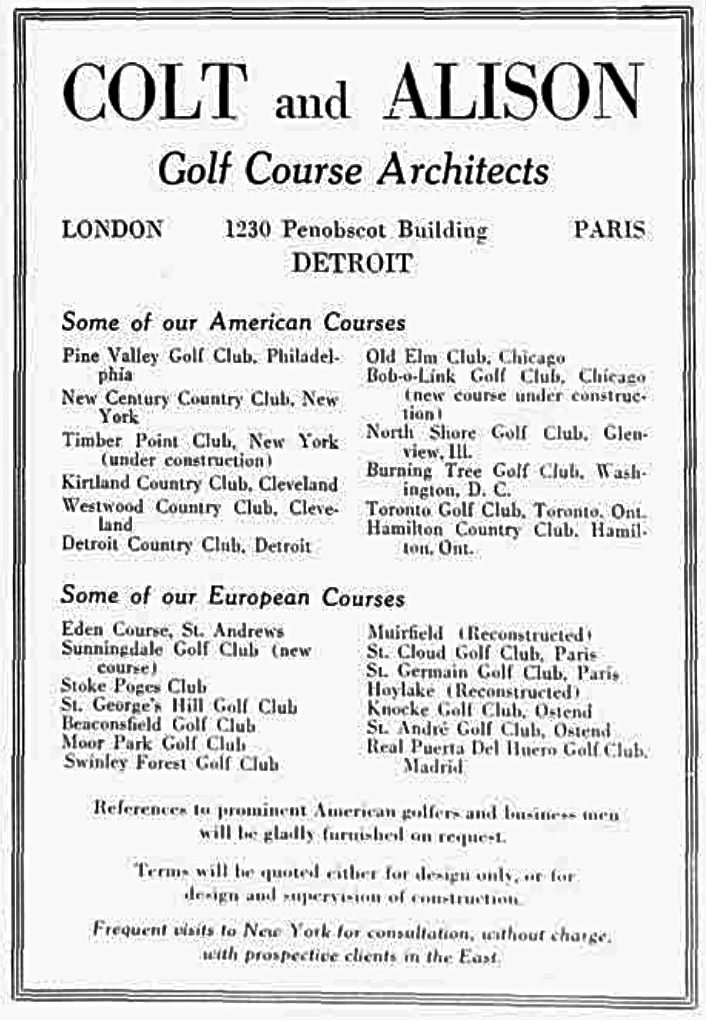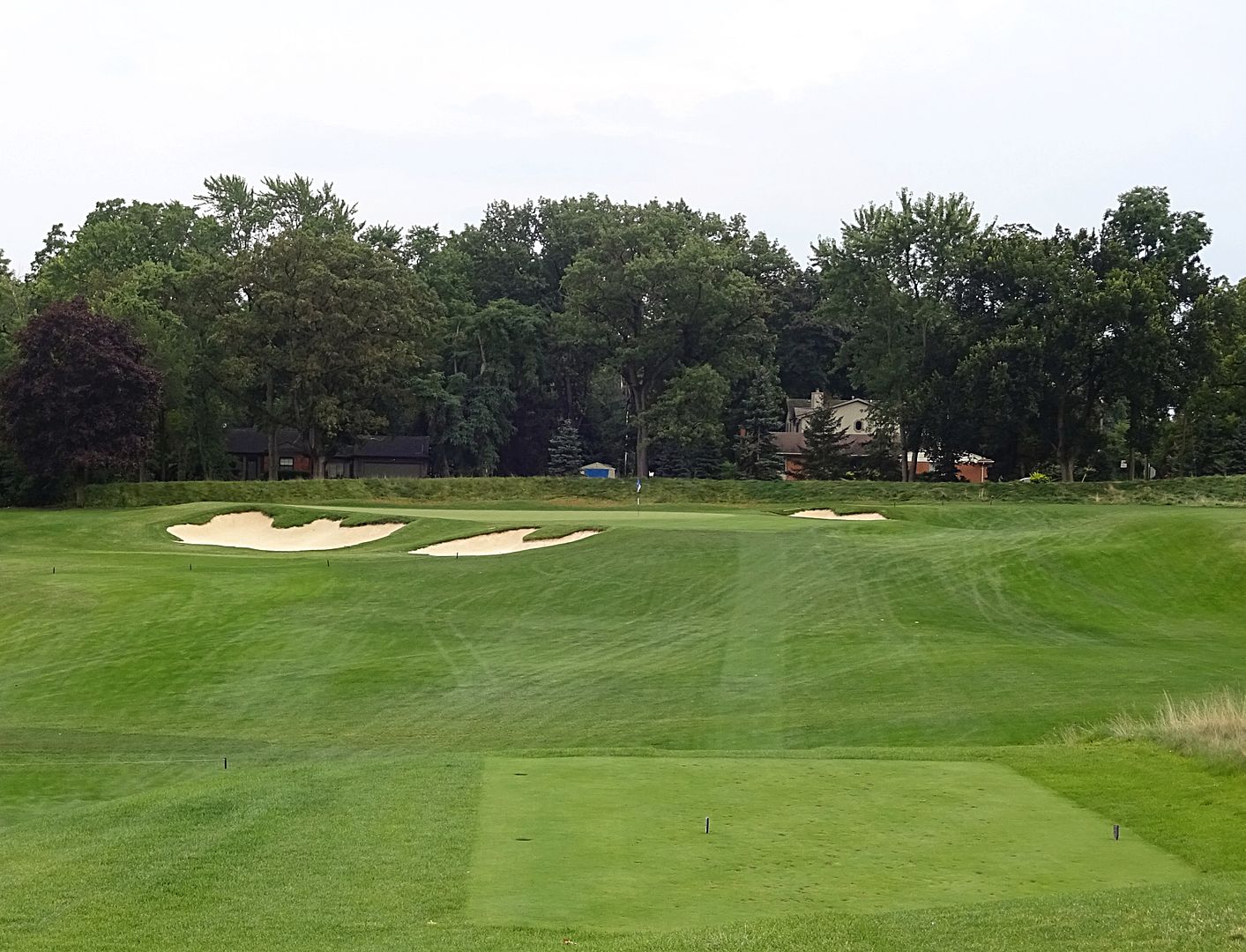Located hard on Orchard Lake, northwest of Detroit, it should not be surprising that sailing was the first activity established at Orchard Lake CC. However, soon after the founding of the club it was obvious that a landscape as striking as the 175 acres donated by Willis C Ward would make for an ideal golf course. For forward thinking persons such as Ward the choice to use a top architect was obvious and finding this person wasn't onerous. At the time Hugh Alison had offices located in Detroit’s Penobscot Building. The choice of Detroit for an office is likely connected Colt in that he first visited N America in 1911 to design CC of Detroit. There is some confusion over which Penobscot building is being referred to in the flyer, but since the "greater" Penobscot wasn’t opened until 1928, it seems likely that it is the original Penobscot Building at 131 Fort St (directly next door to the "greater" Penobscot Building) which is where Alison hung his sign. Famously, Alison was in partnership with Colt for nearly his entire architectural career and due to this association, Alison has been somewhat unrecognized as a significant classic age designer. It is generally acknowledged that any Colt & Alison work in North America post WWI should in fact be credited to Alison. During his 10 year (1920-1929) partial residence in the US, Alison designed over 20 courses, including several in Michigan and worked on as many as 43.
As Muirfield wasn't remodeled until 1925 the likely date of this ad is circa 1925-1927.

Driven by what started out as a bunker renovation project, Orchard Lake Country Club took the momentous step to completely renovate the design. The renovation included new green surfaces using a recently created strain of bent grass, a bunker renovation, green and fairway expansion, tree removal and the creation of major areas of native fescue. Well known architect Keith Foster was engaged to help the club breath life back into the 1926 Alison design, however, as with any good renovation project, the course Superintendent is an instrumental person in the process. Speaking briefly with Orchard Lake’s Super, Aaron McMaster aka Turf, it is clear Aaron was in awe of the design since his arrival in 1996 as a young assistant and shared Foster’s vision of what Orchard Lake could become.
Anybody with a minimal understanding of Alison would note the importance of greens and bunkers in his designs. Alison generally advocated and designed tougher courses than did Colt and one of the main differences would be the depth of bunkers. Due to his famous work in Japan, the Japanese honour the memory of Alison by calling the large, deep pits “Alisons” (though the pronunciation is more like “Arizons”). Alison would go on to design courses on five continents (being old school I still consider Australia a continent rather than an island) before his death in 1952; a formidable legacy indeed.
The members of Orchard Lake are fortunate that Foster had already studied some Alison designs before setting foot on the property. The result of this experience was the initial removal of trees to allow for increased fairways (13 added acres to 35) which then made it possible to restore lost bunkers...22 in total! Perhaps more telling is the substantially increased size of the bunkers which now reflect Alison’s original design. Not to be taken lightly, the removal of trees also opened up the course to delicious interior views which highlights the movement of the terrain. Club records indicate that between 1925 and 1927 Alison invested substantial time in the creation of Orchard Lake...upwards of 90 days on site! It should also be noted that his associate, LE Lavis and contractor William Connellan (who partnered with Englishman and Country Club of Detroit professional, Wilfrid Reid, in the design of Indianwood Old at about the same time) were also onsite for much of the process. It is fitting that the club should repay the efforts of these fine men with time, care and due attention to a proper restoration. The most immediate aspect of the course is not the architecture itself, but the space allowed for the architecture to thrive. There is scads of acrerage to take care of business, but it is clear where one should....and could be.

The approach to the first is a prime example of the increased difficulty that nearly all the holes demonstrate.

So much of modern design is about catching golfers out with mathematically placed bunkers. The shortish three-shotter second has its bunkering concentrated in the landforms which can visually accomodate sand. The effect is a more random placement of bunkers which will trouble different golfers on different days.

The short 3rd is a master class of deception. Most of the greens rely on slope for their interest, yet it is often difficult to decipher the flow of the movement. In the case of this hole, the putting surface moves imperceptively to the left...leaving a putt of any length above (right) the hole in three putt country.

More to follow.
Ciao